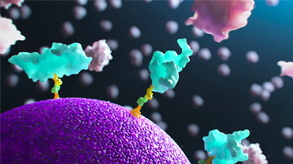GNPC’s Mega-Analysis: The Largest Disease-Specific Neurodegeneration Proteomic Efforts to Date
40,000 samples, 300 million protein measurements
How the SomaScan Assay made it possible
On July 15, 2025, the Global Neurodegeneration Proteomics Consortium (GNPC) published four open‑access papers unveiling the largest disease‑specific proteomic resource ever assembled. By harmonizing SomaScan™ 7K Assay data from over 40,000 plasma and cerebrospinal fluid (CSF) samples across Alzheimer’s disease (AD), Parkinson’s disease (PD), frontotemporal dementia (FTD), amyotrophic lateral sclerosis (ALS) and healthy aging controls, the GNPC has brought together nearly 300 million protein measurements – now openly accessible to accelerate biomarker discovery, mechanistic insight and clinical translation.
Publications at a glance:
| Title | Author |
|---|---|
| Proof-of-concept mega-analysis of global cohorts | Imagm, Farhad et al. |
| Shared vs. disease-specific molecular pathways in AD, PD and FTD | Ali, Muhammad et al. |
| Age- and barrier-related shifts in CSF-plasma proteomes | Farinas, Amelia et al. |
| Cross-disease immune signature tied to APOE ε4 | Shvetcov, Artur et al. |
Proof-of-concept mega-analysis
PUBLICATION
Imagm, Farhad et al.
The Global Neurodegeneration Proteomics Consortium: biomarker and drug target discovery for common neurodegenerative diseases and aging1
Nature Medicine (July, 2025)
| Disease Cohort | Samples Profiled (approx.) |
|---|---|
| Controls/healthy aging | 6,500 |
| Alzheimer’s disease (AD) | 18,000 |
| Parkinson’s disease (PD) | 8,000 |
| Frontotemporal dementia (FTD) | 1,000 |
| Amyotrophic lateral sclerosis (ALS) | 2,000 |
Table 1. Sample distribution by disease cohort (adapted from the GNPC). Approximate plasma and CSF samples profiled by GNPC V1.
Scope: An international collaboration of 20-plus centers collected and analyzed plasma and CSF samples from AD, PD, FTD and ALS cohorts as well as healthy aging controls.
Impact: Establishes an open, harmonized dataset (HDS) – soon available on AD Workbench – to enable community-driven research.
Significance: Confirms that a truly global high‑plex proteomic study can be executed reliably at unprecedented scale.
For GNPC V1 [HDS], we opted to use SOMAmer™ technology … as the primary proteomics platform as it was one of the broadest discovery platforms available.”
See how SomaScan data is comparable
across sites and studies in our technical note on data reproducibility
Shared vs. disease-specific pathways
PUBLICATION
Ali, Muhammad et al.
Shared and disease-specific pathways in frontotemporal dementia and Alzheimer’s and Parkinson’s diseases2
Nature Medicine (July, 2025)
Approach: Comparative analysis of thousands of plasma profiles to delineate both overlapping molecular routes and unique signatures in FTD, AD and PD.
Findings:
- While core immune and metabolic pathways overlap, each disease exhibits unique protein markers with strong potential as diagnostic biomarkers
- Thousands of proteins are disease-associated (5,187 in AD, 3,748 in PD, 2,380 in FTD), with PD and FTD showing the highest signature overlap and AD and PD the least
Significance: Identifying both shared and unique proteomic signatures enables the development of more precise diagnostic panels and therapeutic targets.
[The SomaScan Assay is] a highly sensitive, aptamer based platform.… Previous studies reported median coefficients of variation around 5% for both intraplate and interplate assessments.”
Learn more about the SomaScan Assay’s precision and CV performance in our white paper
CSF-plasma proteome balance in aging
PUBLICATION
Farinas, Amelia et al.
Disruption of the cerebrospinal fluid–plasma protein balance in cognitive impairment and aging3
Nature Medicine (July, 2025)
Approach: Paired SomaScan 7K Assay proteomic profiling of 2,171 CSF and plasma sample sets from healthy and cognitively impaired older adults across multiple cohorts.
Findings:
- Identified 241 proteins whose CSF-to-plasma ratios are enriched for structural domains facilitating transport across brain barrier interfaces
- Showed that aging and cognitive impairment are associated with shifts in these CSF-plasma protein balances, implicating barrier dysfunction in neurodegeneration
Significance: Mapping barrier integrity changes in aging and neurodegeneration uncovers proteomic markers of barrier breakdown that may signal cognitive impairment onset and open new avenues for therapeutic intervention.
The Global Neurodegeneration Proteomics Consortium (GNPC) … hosts the largest collection of SomaScan data (>40,000 patient samples … )”
The SomaScan Platform supports multiple sample types, including CSF and plasma, on a single platform without bridging samples. Learn more about the SomaScan Platform’s versatility.
APOE ε4’s cross-disease immune signature
PUBLICATION
Shvetcov, Artur et al.
APOE ε4 carriers share immune related proteomic changes across neurodegenerative diseases4
Nature Medicine (July, 2025)
Approach: Utilized the SomaScan Assay to profile 1,346 CSF and 9,924 plasma samples from AD, PD, FTD and ALS cohorts, comparing APOE ε4 carriers with non‑carriers.
Findings:
- A conserved, systemic pro‑inflammatory proteomic signature is associated with APOE ε4 carriage across plasma and CSF
- This immune signature is detectable even in asymptomatic APOE ε4 carriers, suggesting it arises before clinical symptom onset
Significance: Revealing a cross-disease immune signature in APOE ε4 carriers highlights a shared pathogenic mechanism and may guide development of early interventions that modulate immune pathways across neurodegenerative conditions.
The GNPC cohort represents the largest collection of SomaScan proteomic data for individuals with neurodegenerative diseases and … controls … ”
The SomaScan Assay profiles 11,000 protein measurements, covering half of the human proteome, for deep insights across major biological pathways.
Learn more about the SomaScan Platform’s coverage.
Commentary spotlight
PUBLICATION
Gates, Bill (Gates Ventures)
Global collaboration is key to decoding Alzheimer’s disease
Nature Medicine (July, 2025)
“Recent progress on Alzheimer’s disease shows what we gain when scientists work together – and what the world loses when bad policies force them apart.”
-Bill Gates (Gates Ventures), Nature commentary on global collaboration in Alzheimer’s research
This World View perspective, led by Gates Ventures and Johnson & Johnson, illustrates the GNPC’s public-private partnership model, uniting academia, government and industry to de-risk and accelerate translational impact.
What’s next
The GNPC’s V2 HDS is already underway, broadening ethnic and cohort representation across AD, PD, ALS and FTD and integrating multi-platform proteomics with expanded SomaScan Assay coverage alongside other high-plex assays.
Additional GNPC analyses are available as preprints, with more to come. Check the GNPC website for the latest releases.
Explore the full GNPC collection on Nature
Discover our neurology solutions
Standard BioTools is proud to contribute SomaScan proteomic data to this initiative, which promises to catalyze breakthroughs in precision diagnostics, proteomics-enabled R&D partnerships and biomarker-guided clinical trials.

References
- Imam, F. et al. “The Global Neurodegeneration Proteomics Consortium: biomarker and drug target discovery for common neurodegenerative diseases and aging” Nature Medicine (2025): doi:10.1038/s41591-025-03834-0.
- Ali, M. et al. “Shared and disease-specific pathways in frontotemporal dementia and Alzheimer’s and Parkinson’s diseases.” Nature Medicine (2025): doi:10.1038/s41591-025-03833-1.
- Farinas, A. et al. “Disruption of the cerebrospinal fluid–plasma protein balance in cognitive impairment and aging.” Nature Medicine (2025): doi:10.1038/s41591-025-03831-3.
- Shvetcov, A. et al. “APOE ε4 carriers share immune-related proteomic changes across neurodegenerative diseases.” Nature Medicine (2025): doi:10.1038/s41591-025-03835-z.
More blogs
BlogHow Blood Proteomics Is Accelerating Neuro Drug Discovery
Explore how researchers are using blood-based proteomics – including data from the Global Neurodegeneration Proteomics Consortium (GNPC) – to uncover new protein signatures, genetic risk associations and mechanistic insights into aging and neurodegeneration.
BlogIndependent study validates the SomaScan Assay as the most precise and comprehensive plasma proteomic platform
A recent independent study by Alkahest, published as a preprint on bioRxiv1, compared the technical precision and performance of multiple plasma proteomic platforms using a common set of samples.
BlogBlood proteins reveal biological age of human organs to help track health and disease
Taking a proteomics-based approach to studying aging can be powerful, as plasma protein levels change rapidly in response to the main influences of biological age. Measuring proteins over the course of a lifetime, across a large number of individuals, provides a picture of how the proteome shifts throughout a “normal” lifespan and can serve as a reference point for the process of aging.





